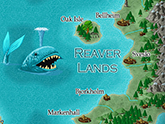

So, let us dissect this macro line by line This is very important, because CC3+ doesn’t detect the changes in the macro text, so it won’t offer to save automatically. Add the following macro into the dialog (erase anything that might be in there already, and remember to hit enter at the end of the last line, otherwise it won’t be recognized as a complete command when running the macro): SYMFILLLOAD typing in the macro, hit Ok and then hit Save before closing the drawing tools dialog. Once back in the dialog after trying our new tool, check both options under Macro command, then hit Save, before hitting the Command to execute button. Remember to say yes to save the tool before proceeding. I recommend you try out the new tool before we proceed, then come back. Because of the fill we used, it will be very transparent, almost invisible on some backgrounds. You now have a nice drawing tool you can use to draw a smooth polygon in your map. Set sheet and layer according to your needs. This fill is solid black, but with a high degree of transparency, so that the end result is that it will just slightly darken anything it is drawn over. Now, hit properties and set the width to a fixed value of 0 (This results in a filled entity instead of just an outline) and set the fill style to solid 20 Bitmap. Set the draw method to Path/Polygon and then click Options and select the Smooth version. Now, hit new and create a tool called Starfield. Click the all drawing tool buttons, followed by the Advanced button to get into the editor. Once I have a setting I am happy with, I save it in my CC3+ data directory, under with our setting in place, we can start with our drawing tool. Since my example is using stars, I’ve elected to use a somewhat large value for random scale to get different sizes, and I’ve also enabled the random symbol selection from group (The symbol catalog I am using have all the stars grouped into a single collection so that it chooses randomly between all of them), as well as using a random layout pattern. The screenshot shows the settings I used for my tool now, but remember these are dependent on map size and default symbol scale in the map. I recommend you try out the settings, and keep tweaking them until you have a setup you like before we move on to the macro part of this (remember when testing that you need a polygon in the map to apply this command to). So, run Draw => Symbols in Area and set up a reasonable setup. For this example, I am using stars from cosmographer, but it could just as well have been trees or cacti or obelisks or villages or whatever you can think of.

I won’t go into detail about Symbols in Area here, since this is about making a macro tool that uses the command, rather than explain the command itself, but if you need a refresher for the command, you can look at this article.įirst thing we’ll do is to create a saved setting for the Symbols in Area command, as we want to be able to load this from our macro so the drawing tool uses the same settings each time. Let us make a similar macro that uses the Symbols in Area command instead. What happens is that the tool itself is only set up to draw that forest background, but it also contain a macro that gets called when you are done drawing that calls the Fill With Symbols command to fill the area you just drew with trees. If you pay attention when you use them, you’ll note that they ask you to draw a smooth shape, and then fills this shape with trees after you are done drawing it. If you have been making overland maps, you’ll probably familiar with the forest drawing tools. Today, we’ll look at how to create these tools and have a brief look at how they can make things easier for us. A drawing tool can contain an embedded macro which follow the tool and isn’t dependent on your main CC3+ macro file and can contain macros that work in tandem with what you draw using the tool, or even functionality that isn’t connected to drawing at all. However, there is another very important feature that exists for drawing tools, and that is to attach macros to them. Drawing tools also have some built-in nice features like being able to draw two separate entities at once, being able to stay within the map border, and the option to easily edit an existing shape. The basic functionality of a drawing tool is that it works as a preset that contains all the various settings required, such as line style, fill style, line width, color, sheet and layer so that when you draw using a drawing tool you don’t have to go around setting all of these manually like we did in the good old days.

In CC3+, drawing tools are great timesavers. Remy Monsen | Decem| Campaign Cartographer, CC3 Plus, drawing tools, macros


 0 kommentar(er)
0 kommentar(er)
